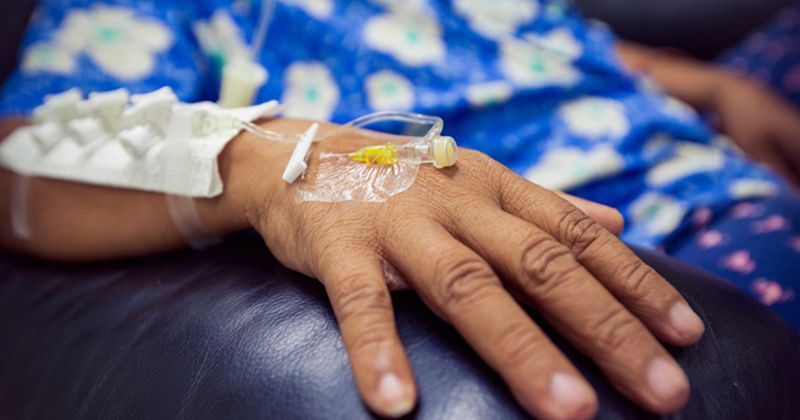Pembrolizumab plus chemotherapy effective in newly diagnosed classical Hodgkin lymphoma
Pembrolizumab followed by doxorubicin, vinblastine and dacarbazine appeared safe and effective for newly diagnosed classical Hodgkin lymphoma, including for patients with bulky disease, according to phase 2 study results published in Blood.
“Checkpoint inhibitors have been used in relapsed Hodgkin lymphoma, and now pembrolizumab and nivolumab have been used as part of upfront therapy,” Jane N. Winter, MD, professor of medicine at Northwestern University Feinberg School of Medicine, told Healio. “Our study is the only trial investigating pembrolizumab [Keytruda, Merck] in the front-line setting, and nivolumab [Opdivo, Bristol Myers Squibb] has been used in two previous trials. The impressive responses seen in relapsed patients led us to hypothesize that previously untreated individuals with more robust immune systems would have greater benefit from checkpoint inhibition.”

Chemotherapy with doxorubicin, bleomycin, vinblastine and dacarbazine remains a standard of care for initial treatment of patients with classical Hodgkin lymphoma. However, this treatment alone fails to cure 15% to 30% of patients with early unfavorable and advanced-stage disease and is associated with acute and chronic toxicities, such as bleomycin lung injury in approximately 10% of patients, according to study background.
Previous studies have shown pembrolizumab, a humanized immunoglobulin G4 monoclonal antibody targeting PD-1, is effective in relapsed and refractory classical Hodgkin lymphoma.
Earlier this month, the FDA expanded approval of the agent to include its use as monotherapy for adults with relapsed or refractory classical Hodgkin lymphoma after front-line therapy, or for treatment of children with refractory disease or disease that relapsed after two or more lines of therapy.

In the current study, Winter and colleagues assessed pembrolizumab among 30 patients with untreated early unfavorable (n = 12) or advanced-stage (n = 18) classical Hodgkin lymphoma.
Treatment consisted of a flat dose of 200 mg pembrolizumab every 3 weeks for a total of three doses. Depending on disease stage and bulk, patients then received four to six cycles of 25 mg/m² doxorubicin, 6 mg/m² vinblastine and 375 mg/m² dacarbazine every 14 days of a 28-day cycle.
Twelve patients had either large mediastinal masses or bulky disease, defined as greater than 10 cm.
Complete metabolic response rate after pembrolizumab monotherapy served as the study’s primary endpoint. Safety and tolerability of sequential therapy, PFS, OS and decline in metabolic tumor volume with pembrolizumab served as secondary endpoints.
Median follow-up was 22.5 months (range, 14.2-30.6).
Results showed 11 patients demonstrated complete metabolic responses after pembrolizumab monotherapy, including six with advanced-stage and five with early unfavorable disease. An additional seven patients achieved greater than 90% reductions in metabolic tumor volume according to PET-CT scanning.
All patients achieved complete metabolic response after two cycles of chemotherapy and maintained their responses at the end of treatment.
Researchers observed no changes in therapy, progressions or deaths.
No patients received consolidation radiotherapy, including those with bulky disease.
Therapy appeared tolerable, with grade 1 rash (n = 1) and grade 2 infusion reactions (n = 4) as the most common immune-related adverse events. Grade 3 or grade 4 pembrolizumab-related adverse events included immune-related elevated liver enzymes after the first dose of chemotherapy (n = 1), grade 4 neutropenia (n = 3), grade 3 lymphopenia (n = 1), grade 3 diarrhea (n = 1) and grade 3 Bell palsy (n = 1).
“The number of patients treated in this trial was small, so we’d like to confirm our experience in a larger number of patients,” Winter said. “Also, follow-up thus far is short, so we’ll need to follow our patients for relapse or late toxicities.
“We’d also like to explore this strategy in bulky patients to eliminate the need for radiotherapy,” she added. “The responses we saw in very bulky disease were remarkable.”
For more information:
Jane N. Winter, MD, can be reached at jwinter@nm.org.










